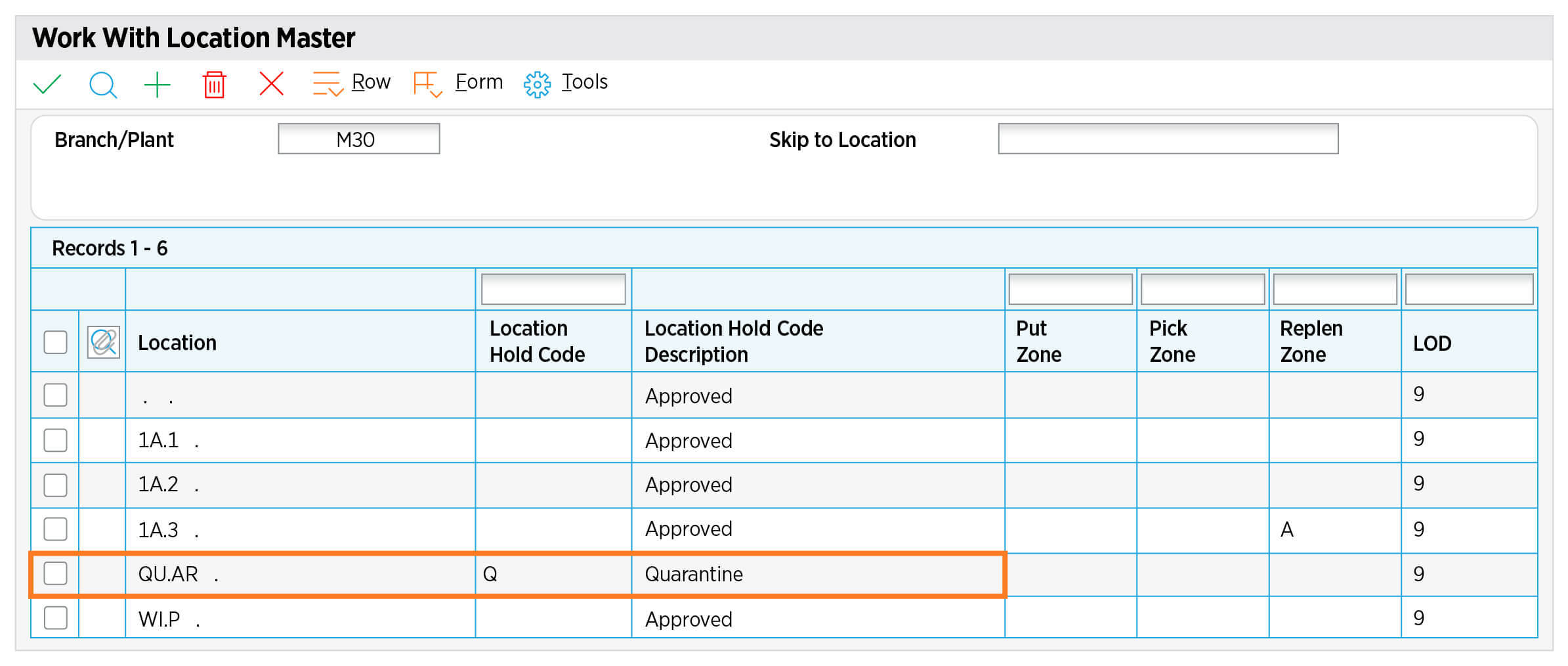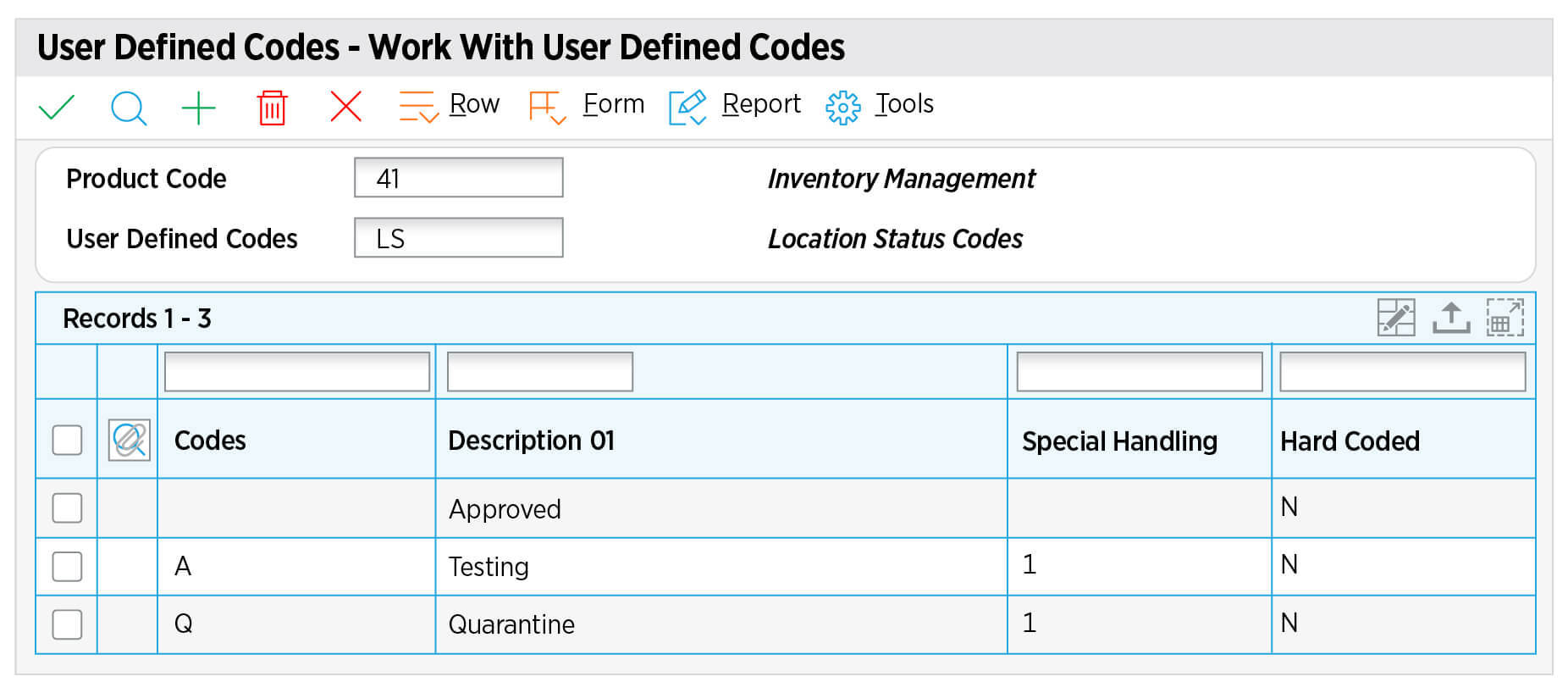
Impact on transactions
Oracle has introduced new functionality for JDE EnterpriseOne 9.2 to "Allow Inventory Locations to be Put on Hold". Previously this was achieved by needing to update individual item/lot/location records which was an onerous and tedious process.
Inventory transactions
Various inventory operations (e.g., transfers, adjustments, issues) will trigger an error if the location's hold code restricts the movement of inventory.
Availability calculation
The availability of items in a location is influenced by the hold status, with specific codes affecting whether quantities are considered available.
Warehouse transactions
Hold statuses affect processes like putaway, picking, and replenishment, with errors generated if movements are attempted in restricted locations.
Sales transactions
During sales order entry, the system checks the location's hold status and prevents committing inventory from restricted locations.
Transportation and work order transactions
Similar validations occur during shipping, load confirmation, and work order completions, ensuring that inventory cannot be moved into or out of a location with a restrictive hold code.
MRP and planning
The hold status also impacts Material Requirements Planning (MRP) by determining whether quantities from held locations are considered during calculations.
Purpose and overview
Putting an inventory location on hold is designed to streamline inventory management by allowing the hold status of a location to control the availability and movement of items within that location. This is achieved by using a Location Hold field in the Location Master (P4100), which eliminates the need to update individual item/lot/location records as below.

Functional design
The hold status of a location is controlled by a new User Defined Code (UDC) 41/LS - Location Status Codes. These codes determine the types of transactions allowed in a location:
Blank: Allows all transactions.
1: Allows only incoming transactions.
2: Allows only outgoing transactions.
3: Prevents both incoming and outgoing transactions.
4: Allows incoming and internal movements, restricts availability for use.






